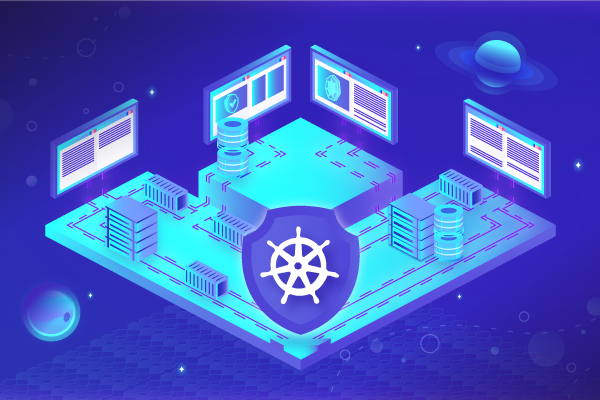Kubernetes Security – 5 Best Practices

KUBERNETES SECURITY BEST PRACTICES
Kubernetes Security Best Practices is of prime importance in a modern-day scenario where the dependence of the companies has increased over the usage of containers or containerized applications.
Kubernetes, which is a portable open-source tool which is used for managing the containerized applications had gained wide reach among people when it was first introduced. Its publicity and reach dropped due to the security vulnerabilities which was detected when closely observed. The security vulnerabilities were continuously emerging anywhere and everywhere from runtime engines to container images and weak networks. Google web search, a huge chunk of the Microsoft UI and Amazon Web Services (used by a lot of websites) are some of the common digital applications which include containers that we use on a daily basis.
The 5 main Kubernetes security best practices are as follows:
- Enabling Role-Based Access Control (RBAC)
- Update to the Latest Version
- Usage of Namespaces
- Enabling Audit Logging
- Securing Pods and Containers
Enabling Role-based Access Control (RBAC)
It is important to ensure that no user gets more access than required for their responsibility. Role-Based Access Control (RBAC) is a feature that limits and controls whoever has the access to Kubernetes AIPS and helps in controlling them.
There are four top-level roles that are provided by the RBAC:
- The role provides permission to access the resources in a single namespace.
- Cluster-scoped resources, non-resource endpoints and resources from other namespaces are added by the Cluster-Role to the role type.
- Role binding accords authorization defined in a role to a user or set of users.
- Cluster Role Binding is the same as Role Binding but across a cluster.
RBAC has significant importance in a company where the developers are sectioned into departments and there is no common area.
Update to the latest version
Updating to the latest version helps in overcoming security vulnerabilities. And hence, like any other application, Kubernetes needs to be updated into the latest versions available. This helps in avoiding security loophole exposure.
The loopholes or the vulnerabilities in the containers in the applications are sometimes not assessed. They are either known or unknown. The source images updating and redeploying those images into respective containers helps the application to better equipped.
Usages of namespaces
The territory of security can be established with the concept of namespaces which is used by Kubernetes. A namespace is used in order to separate two components. First-level isolation is created when a namespace is created. There are certain security limitations when it comes to multiple namespaces as Kubernetes does not have a mechanism to provide security over namespaces. For limiting and controlling the users RBAC is preferred. When a namespace is created for limiting users into a specific component, there arise the chances of security vulnerabilities and risk which can be avoided by using the RBAC.
Enabling Audit Logging
Authorization failures imply that there is something unwanted happening. The unauthorized accesses might be an external user or an internal user with a different namespace. It is important to note the anonymous API calls that come especially when authorization failures are encountered. Hence noting the audit logs and monitoring them is of prime importance while working on Kubernetes.
Cluster-based logging offered by Kubernetes, allows all container activity to be logged into a central log hub. Once the central log hub is made, all the quality outputs and error outputs of every container are often ingested using an efficient agent running each node into Google Stack driving logging.
Securing pods and containers
Two or more containers are housed in the objects called pods. The configuration of the security context of each pod and container has to be ensured. The cloud provider or deployment model can be varied. Depending upon the cloud provider or the deployment model instructions to define and enable a Pod Security Policy also varies accordingly.
A Pod Security Policy allows administrators to control the following:
- Running containers with privileges
- Usage of host namespaces
- Volume type usage
- Host file system usage
- Usage of the read-only root file system
- User and group container IDs and much more.
These are the five different Kubernetes security best practices and protection of the applications.
Don’t forget to check out our latest course Ethical hacker junior




 Cyber Security
Cyber Security


